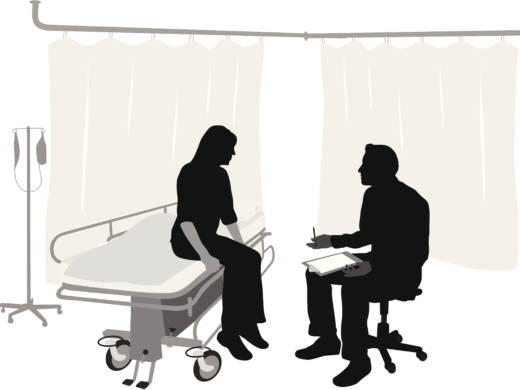"When trafficking victims come through the health care system but we don't identify them, it's a big missed opportunity," says Dr. Santhosh Paulus, a family physician who is the site director of the Huntington Hospital's family medicine residency program and who started the program at Northwell.
Northwell is one of a growing number of hospitals and health care systems that are putting such programs in place. They want to alert staff to be on the lookout for trafficking, much as they watch for signs of child abuse, domestic violence and elder abuse.
Since last spring, nearly 300 staff members at Huntington Hospital and a family clinic have received training in how to spot trafficking victims and how to help them.
Training is given not only to doctors and nurses but also to registration and reception staff, social workers and security guards. Restore NYC, an organization that assists people caught up in sex trafficking, provided the initial training to key staff, and a hospital task force trains the others. During the next few years, similar efforts will be rolled out at all of Northwell's 23 hospitals, Paulus says.
Identifying victims of trafficking is not unlike identifying victims of other forms of violence, says Dr. Wendy Macias-Konstantopoulos, director of the Human Trafficking Initiative at Massachusetts General Hospital in Boston.
One of the big red flags is when people delay coming in for medical care, such as waiting weeks to come in to get an injured ankle or sexually transmitted infection checked out, Macias-Konstantopoulos says. Or it may be a pattern of injuries that don't make sense. Sometimes people are reluctant to explain their injury, or they come in with someone who seems overbearing.
"Having a high index of suspicion is the first step," she says. "If we're not asking about it, we're just not going to see it."
Starting in October, health care providers can also start using new diagnosis codes in their records to differentiate trafficking from other types of abuse. This will help track the number of victims and provide appropriate treatment.
Asking may not be enough, however. Depending on what's going on in their lives, these patients may not be willing or ready to acknowledge that they need help, says Holly Gibbs, human trafficking response program director for Dignity Health, a health care system with nearly 40 hospitals in California, Nevada and Arizona.
Gibbs knows the issue well. She was forced briefly into prostitution in Atlantic City, N.J., after meeting a man at a shopping mall as a 14-year-old and running away with him. The man persuaded Gibbs to go with him with promises of a new, glamorous life as a musician or model.
At the time, Gibbs says, she thought that what happened to her was her own fault, a result of choices she made. No health care or law enforcement professional connected her to social services that could have helped her understand otherwise. She was reunited with her family by law enforcement personnel, who arrested the man, who was later convicted.
Dignity Health has implemented a human trafficking response program in the emergency departments and labor and delivery areas of each of its hospitals. Now it's rolling out the program at clinics and physicians' offices as well.
A key priority is to help clinicians know how to talk to patients about any violence they may be facing and to connect the patients with outside sources of help.
But in the end, if these patients don't want assistance, "you respect their wishes," Gibbs says. "They may not be ready to accept help now, but you may plant seeds so they'll be able to accept it later on."
Kaiser Health News is a nonprofit news service covering health issues. It is an editorially independent program of the Kaiser Family Foundation that isn't affiliated with Kaiser Permanente. You can follow Michelle Andrews on Twitter: @mandrews110.

9(MDAxOTAwOTE4MDEyMTkxMDAzNjczZDljZA004))